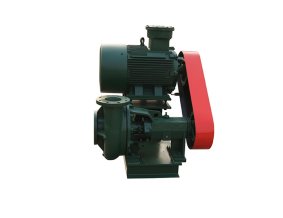The Importance of Solids Control in Jet Mud Mixing Pump Systems
In the realm of drilling operations, particularly in the oil and gas industry, the management of drilling fluids is paramount. Among the various equipment used to optimize the drilling process, solids control systems and jet mud mixing pumps stand out as essential components. A deep understanding of how these systems work and their significance can lead to enhanced drilling performance and efficiency.
Understanding Solids Control
Solids control refers to the process of maintaining the quality of drilling fluids by removing unwanted solid particles while ensuring the optimal performance of the drilling operation. During the drilling process, a variety of solids are introduced into the drilling fluid, including cuttings from the rock formations and other materials. If not managed properly, these solids can lead to a number of problems, such as reduced drilling efficiency, increased wear and tear on equipment, and ultimately, higher operational costs.
A well-designed solids control system employs various methods to separate solids from the drilling fluid. Equipment such as shale shakers, desanders, dewaterers, and centrifuges play crucial roles in this process. Each piece of equipment is designed to target specific sizes and types of solids, and together, they form a comprehensive solids control solution.
The Role of Jet Mud Mixing Pumps
The jet mud mixing pump is integral to the drilling fluid system, particularly in the preparation and circulation of the drilling mud. By mixing the necessary additives with water and returning the fluid to the surface, jet mud mixing pumps ensure that the drilling mud retains its desired properties. These properties include weight, viscosity, and flow characteristics, which are vital for effective drilling operations.
One of the key advantages of jet mud mixing pumps is their ability to efficiently mix large volumes of fluid rapidly. This results in a homogenous drilling mud that can withstand varying downhole conditions. In addition, the use of high-pressure pumps allows the introduction of solids control additives directly into the mud, enabling real-time adjustment of the fluid’s properties as drilling conditions change.
solids control jet mud mixing pump company
Benefits of Efficient Solids Control and Mixing
The combination of effective solids control and jet mud mixing pumps leads to several benefits in drilling operations
1. Enhanced Drilling Efficiency By maintaining optimal fluid properties, drilling teams can reduce the risk of stuck pipe incidents, excessive torque, and other issues that may slow down drilling progress.
2. Cost Reduction Efficient solids management minimizes the need for costly drilling fluid replacements and can significantly lower the costs associated with equipment repairs due to abrasive solids.
3. Environmental Responsibility Improved solids control reduces the discharge of harmful materials into the environment, thus promoting environmentally sustainable drilling practices.
4. Better Wellbore Stability Proper solid particle management ensures that the wellbore remains stable throughout the drilling process, which is crucial for the successful completion of the well.
Conclusion
In conclusion, the integration of solids control systems with jet mud mixing pumps is vital for effective drilling operations. By maintaining the quality of drilling fluids, operators can enhance efficiency, reduce costs, and minimize environmental impacts. As technology continues to advance within the oil and gas sector, the importance of these systems will only grow, paving the way for more efficient and sustainable drilling practices. Investing in high-quality solids control technologies and jet mud mixing pumps is not only a testament to operational excellence but also a commitment to the future of the industry.
 Linear Motion Shale Shaker In Drilling Rig
Linear Motion Shale Shaker In Drilling Rig  Oilfield Mud Cleaner
Oilfield Mud Cleaner  Drilling Fluid Decanter Centrifuge
Drilling Fluid Decanter Centrifuge  Drilling Mud Desander
Drilling Mud Desander  Hydrocyclone Desilter
Hydrocyclone Desilter  Centrifugal Pump/Centrifugal Mud Pump
Centrifugal Pump/Centrifugal Mud Pump  Shear Pump
Shear Pump  Jet Mud Mixer
Jet Mud Mixer  Horizontal Mud Agitator
Horizontal Mud Agitator  Constant Pressure Drilling Fluid Mud Gas Separator
Constant Pressure Drilling Fluid Mud Gas Separator  Mud Gun
Mud Gun  Mud Tank
Mud Tank  Solids Control System Vacuum Degasser
Solids Control System Vacuum Degasser  Flare Ignition Device
Flare Ignition Device  Diesel Tank
Diesel Tank  Submersible Slurry Pump
Submersible Slurry Pump 





































